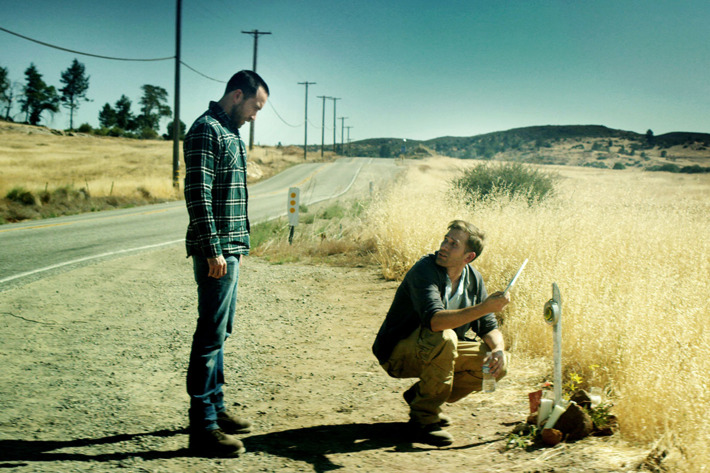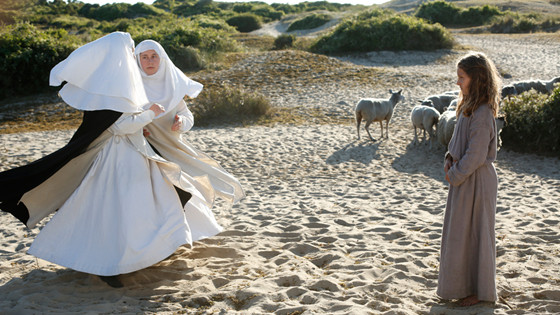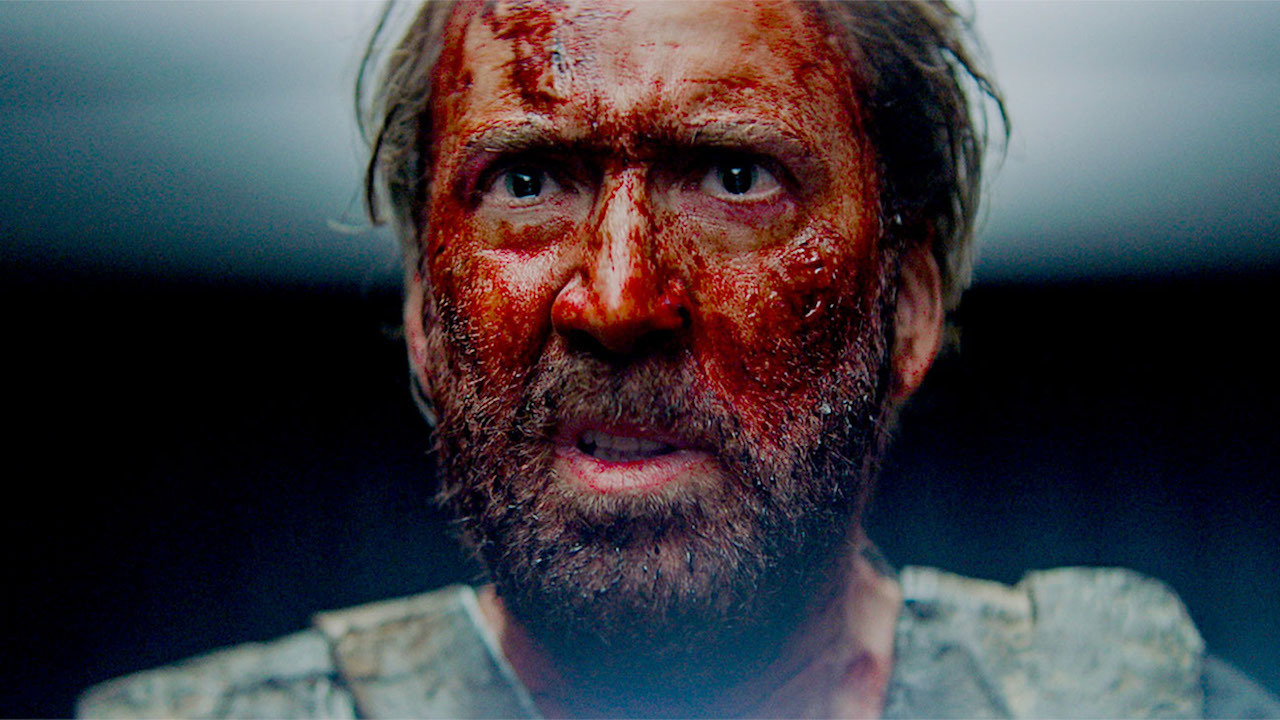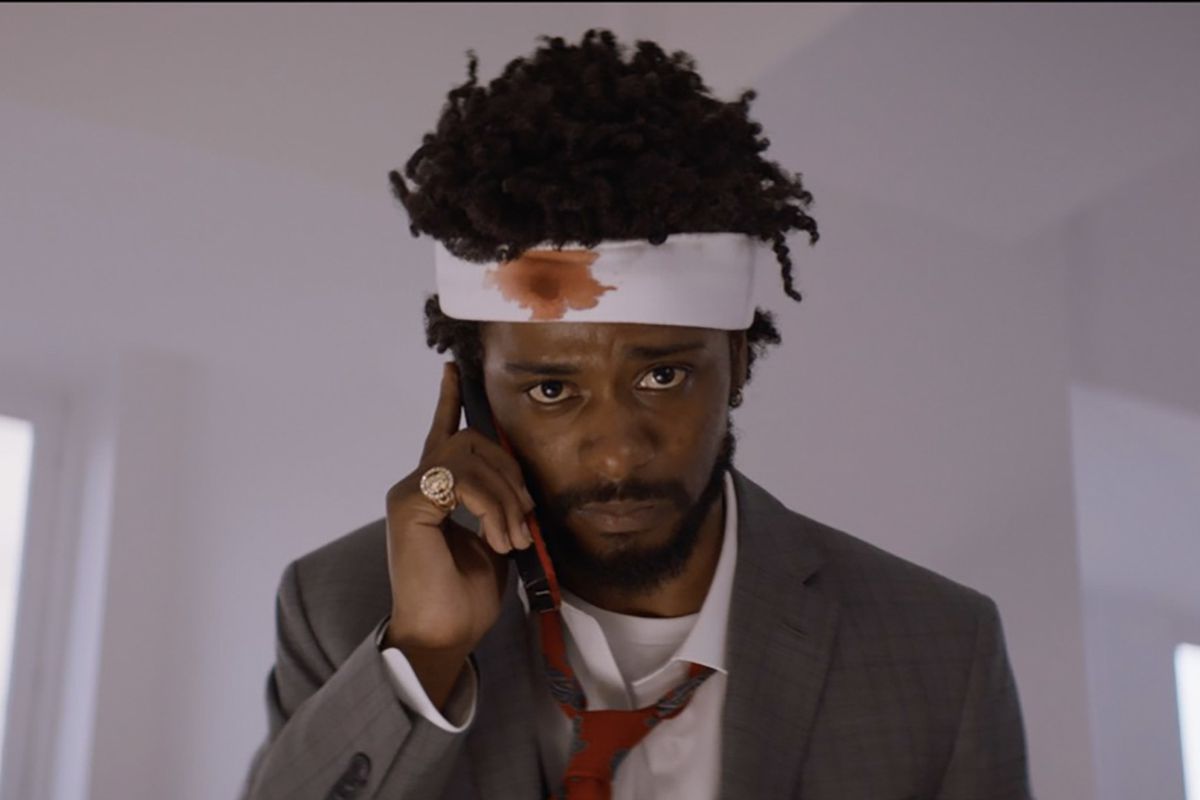5. The Endless

The Endless is the latest heartfelt genre mashup Justin Benson and Aaron Moorhead. It is low budget, high concept, artfully executed, and endlessly clever. Benson and Moorhead also star as brothers who years ago left a UFO death cult. The brothers find themselves returning to their cult after a video finds its way to them.
Like their previous feature Spring, The Endless uses a personal story as an entry way to a riff on an old genre trope. Here it’s two brothers who really only have each other. As brothers, Moorhead and Benson have no family and are isolated after leaving the cult. Once they return, eerie details (no one in the cult has aged a day) mix with personal drama (Aaron misses his life at the cult, Justin can’t wait to get away).
Before audiences know it, the film has transformed into something more sinister. It turns out that both Justin’s misgivings about the cult and the cult’s strange explanations hold water. Everyone is caught in a time loop that also harkens back to the Benson and Moorhead’s first feature Resolution. The Endless manages to be a deeply personal story about family, a grisly horror sci-fi instalment, and part of what is arguable the most humble cinematic universe this side of a comic book panel.
4. Jeannette: The Childhood of Joan of Arc

Jeannette: The Childhood of Joan of Arc almost didn’t appear on this list because it was released in some territories in 2017. However, that wasn’t enough to keep it off this list where it so thoroughly belongs. The Boston Globe summed it up best: it’s “very likely the first medieval heavy-metal musical ever to grace the silver screen”.
Counting Legendary director John Waters and Cahiers du Cinéma as admirers, Jeannette: The Childhood of Joan of Arc is truly different. Few films dare to be as bizarre and unorthodox as Jeannette. It’s a musical about the childhood of Joan of Arc, which is straightforward enough. It’s not the first musical to use the famed historical figure as its subject. But director Bruno Dumont finds something different by placing his trust, and music, in the hands of avant garde musician Igorrr.
Jeannette: The Childhood of Joan of Arc is by no means a perfect film, with many critics noting that it could be as boring as it was strange. On a list of divisive films, this one is among the most divisive. And while these arguments are usually reserved for the social or political elements of film, the fact that viewers can respond to Jeannette: The Childhood of Joan of Arc with such different and strong assessments of its quality is proof that, even in film, fortune can favor the bold if the soundtrack is right.
3. Long Day’s Journey Into Night

Gan Bi’s noir is not a Eugene O’Neill adaptation, but O’Neill might’ve found much to marvel at in this story of a man confronting the past when he returns to his hometown after a prolonged absence. Long Day’s Journey Into Night reads like a conventional story on paper, but it is one of the most audacious stylistic exercises on this century.
Much of this is due to one scene. Midway through, the film launches into a 50 plus minute #D tracking shot. With that, Gan Bi joins the ranks of Herzog and Godard who have used 3D in unconventional ways. He also makes his way as a modern auteur, displaying a level of craft audiences expect from consummate cineastes like Alfonso Cuaron and Alexander Sokurov.
Were this a simple gimmick, it would be enough to assure Gan’s place on this list, but the scene is a technical marvel and an important narrative bridge. Long Day’s Journey Into Night is a combination of genres, styles, and technology. It inserts some of the most modern devices into a traditional story involving a troubled past and a femme fatale. And it merges these seemingly disparate elements with a sense of discipline and maturity that makes it feel less like a gimmick and more like a convergence of times and settings.
Characteristically, Long Day’s Journey Into Night is even innovating in its release. Heavily marketed in China, it sold over $15 million in pre-sales despite being an art film. While the film came and went in the US, barely making a dent in the niche markets, in China it’s being advertised as a New Year’s event. Getting mainstream audiences to anticipate an art film with the same fervor that greets superhero movies may be the most bizarre twist of all.
2. Mandy/Mom and Dad

One of two ties on this list, Mandy and Mom and Dad are united by more bizarreness than Nicolas Cage performances. Both have odd, and violent, premises that lead to odd, and violent, results. It must be a good year for weird cinema when not one, but two Nic Cage films are unapologetically strange.
Panos Cosmatos’ Mandy got the lion’s share of praise and attention. The film is bizarre through and through. On the surface it’s a clean cut tale of murder and revenge. A cult leader, played by real life cult leader Linus Roache, kidnaps the titular character and murders her when she sees through his bravado and false poetics. Her husband, played by Cage, takes a moment to mourn in his tightie whities before embarking on a revenge-filled quest that features chainsaw battles and head smashing. All of this is scored by the late, great Jóhann Jóhannsson to be a synth-studded acid trip to equally trippy images by DP Benjamin Loeb.
If Mandy is a simple premise energized by its hallucinogenic colors, music, and acting, then Mom and Dad is the kind of bad taste premise—something is making parents murder their kids—that succeeds by diving headlong into absurdity. Directed by Brian Taylor, who was one half of the dream team behind the Crank series, Mom and Dad is a thorough look at how a wave of filicide affects a family, and how each parent, child, and grandparent responds.
Nic Cage goes predictably berserk with predictably delightful results, but it’s Selma Blair who steals the show as the mom who can’t bring herself to fight against her worst impulses. A surprise appearance by Lance Henriksen adds some last minute energy. Not everyone will think that Mom and Dad is good, but it’s hard to deny that it’s exactly what it wants to be.
1. Sorry to Bother You

Sorry to Bother You isn’t bizarre simply because of its zany elements. Of course, the equisapians and the white voice are bizarre ideas that certainly up Sorry to Bother You’s weird factor. But what makes the film truly bizarre is the way that it blends such fantastical elements into such a relatable sense of time and place. Some films try to explain their unrealistic elements, Sorry to Bother You assumes audiences are already on its wavelength.
Sorry to Bother You has a lot to say. It comments on workers’ rights, exploitation, racism and sexism, localism, and income inequality. Writer/director Boots Riley shows incredible confidence with his debut film. Something so weird and ambitious could’ve floundered like so many preachy, high concept films do. But Riley seems oddly ahead of everyone. His film has big speeches, but while the actors giving them are impassioned, the story never stops for polemics.
Even the bizarre twists and plot points forsake the big reveals and grandstanding that we’ve come to expect. Perhaps what makes Sorry to Bother You so effective is that it never wants to be anything more than it is. Its subject matter gives it gravity and social relevance, but the film never takes itself too seriously. Its stylistic elements should make it a zany comedy, but the actors play their characters as people who are engaged and serious, not as people in on the joke.
Like the best satire, Sorry to Bother You doesn’t try to convince us because it understands that we already know what it’s talking about. The film hops between genres and tones while expecting its audience to accept some very outlandish plot beats. Somehow, it’s not the equisapians or the white voice that seem bizarre, it’s the public complacency that’s the real oddity, and this is the triumph of Sorry to Bother You.